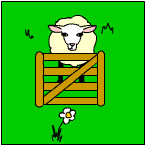Sedgwick Geological Trail
Created | Updated Jun 20, 2011
One hundred years ago geologists thought the earth's crust was like the shell on an egg.
Then during the past fifty years they came up with Plate Techtonics . 2
Apparently at one time the pastures of
Yorkshire were one one plate and
Cumbria
with it's mountains and lakes was on another. Even now where these plates met
there are a series of geological fault lines.
According to the USGS3 glossary of terms a fault is
"a fractureAt the Sedgwick Geological Trail small areas of these blocks of crust have been exposed
along which blocks of crust on either side have moved relative to
one another parallel to the fracture."
here by the river. The strata here is definitely visible. This trail located on the Dent Fault where it crosses a river in Yorkshire is named after a nineteenth century Geologist Adam Sedgwick .
THE LOCATION

The trail is located at the the bottom of a hill on A684 near Sedbergh(Cumbria) England4
Today this is a barely marked footpath in a sheep pasture(Longstone Common).
Assuming the trail is still open to the public one should
watch their step if they go there because the sheep are still present doing what sheep do. Rock Hounds come here to see the rock where it has been cut by the river exposing the various layers of sediment. 330 million year old synclines5
and folds are visible and the nature of the rock changes abruptly as the river crosses the Dent fault.
During what some have called the golden age of geology in Britain Sedgwick walked in this pasture and noticed the fault. He went on to become a renowned Geologist at Cambridge University. During the 1980's this trail was made and perhaps it was once easy to see where the path went.
TO FIND THE TRAIL>

Park along A684 in a gravel car park at the top of a hill. Walk the finished path which leads to the right downhill. At the river, before crossing the footbridge, turn left onto the grass. Now you are on the Sedgewick Geological Trail. Weatherbeaten wooden posts are numbered with points on the trail. Not all of them are easy to spot. what is easy to see is the river and the strata of the rock on it's other shore. Upon close inspection you can almost tell where you have crossed the fault, because the nature of the rock along the river changes. At the end of the trail it is a steep climb back to the car park.
A5936062For more on Plate techtonics read This Dynamic Earth OR BBC Bitesize3the U.S.Geological Survey4map reference GR695912 sheet reference 98 in os 1to 50000 Landrangers series5 Where beds of rock dip towards each other
for example click here
